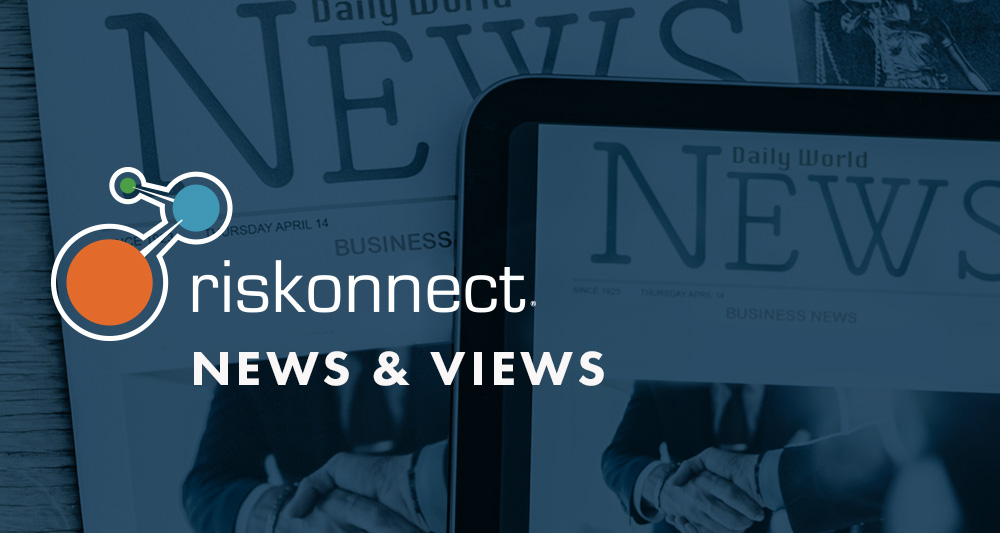Fourth-party risk lurks as a silent menace in the intricate web of supply-chain management. Concealed beyond the immediate reach to direct suppliers, it extends deep into the layers of the supply-chain ecosystem, reaching all the way to the procurement of raw materials. If you believe that your contracts with third-party suppliers keep you safe, think again.
Businesses are now accountable not only for entities they directly contract with but also for several layers deep within the supply chain. Parties throughout the supply-chain ecosystem must meet the standards set by new regulations and environmental commitments. The conventional approach of third-party vendor risk assessments – relying almost solely on questionnaires – is no longer enough to address the intricacies of fourth-party risks that may remain hidden and pose threats to operations and the bottom line.
A growing number of state and international regulations is increasing the urgency to address fourth-party risk. Acts like the Uyghur Forced Labor Prevention Act (UFLPA) and the German Supply Chain Act introduce stringent requirements. Noncompliance can impact your bottom line, reputation, and production capabilities.
Environmental, Social, and Governance Compliance
ESG compliance is no longer a can to be kicked down the road — in many cases, it is already a legal requirement. To address fourth-party risk, start by acknowledging and mitigating pressing social and environmental issues that could affect your supply chains. Ignoring or procrastinating such issues not only jeopardizes sustainability objectives, but it also invites reputational damage. Here are three ESG issues to note:
- Climate concerns. Regulations such as California’s Climate Corporate Data Accountability Act impose severe consequences for noncompliance with carbon-limiting initiatives and actions. Fines can be substantial for Scope 1, 2, and even Scope 3 violations.
- Problematic resources. Child labor, plastic use, and other ethical considerations are increasingly becoming legal requirements. The eradication of child labor from supply chains, in particular, is a legal obligation in many regions. The Customs and Border Patrol (CBP) is now actively enforcing regulations such as the UFLPA by impounding or seizing imports that are in violation. Importers facing CBP actions must navigate a complex process, which adds time and costs, to address issues and obtain shipments.
- Conflict minerals. Laws like the U.S.’s Dodd-Frank Act require companies to disclose the use of minerals from regions in conflict. Noncompliance – including false or misleading statements to the SEC – can result in severe consequences for the violating organization.
 Cybersecurity Challenges
Cybersecurity Challenges
The frequency and size of data breaches and cyberattacks continues to skyrocket. A cybersecurity event at a third- or fourth-party vendor can be just as damaging as a direct hit to your organization, especially if they handle sensitive information. Not only do you have the cost of repairing the data breach itself, but you could also be impacted by regulations like SEC’s mandatory disclosure requirements.
Safeguarding sensitive data within the fourth-party realm requires proactive measures. Hold your suppliers – direct and indirect – accountable to your cybersecurity standards and establish a process for reviewing cybersecurity incidents at third parties, fourth parties, and beyond to determine the materiality of the incident and potential impact.
 Tech Is Essential for Managing Fourth-Party Risk
Tech Is Essential for Managing Fourth-Party Risk
The sheer volume of data required to manage fourth-party risk demands sophisticated tools and systems to ensure comprehensive coverage, particularly regarding data collection, standardization, and reporting. ESG-specific software solutions enable businesses to produce evidence of their adherence quickly and easily. This software is built specifically to streamline data collection from your entire supplier ecosystem and aggregate information that often gets stuck in silos.
Organizations also need advanced cybersecurity capabilities specific to fourth-party risk, including automated threat-detection systems, real-time monitoring, and technology-assisted communication with vendors. This type of vendor cybersecurity helps ensure data integrity, mitigate risks, and guard against the severe consequences of security breaches.
The dangers of fourth-party risk are real, and inattention could be costly, in terms of fines, penalties, impounded goods, and lawsuits, as well as reputational damage. Proactively managing these risks is now a business imperative — and a strategic necessity for maintaining compliance and long-term sustainability.
For more on managing fourth-party risk in supply chains, download our ebook, Taking a Stand on ESG, and check out Riskonnect’s Environmental, Social, and Governance software solution.


 Cybersecurity Challenges
Cybersecurity Challenges Tech Is Essential for Managing Fourth-Party Risk
Tech Is Essential for Managing Fourth-Party Risk


